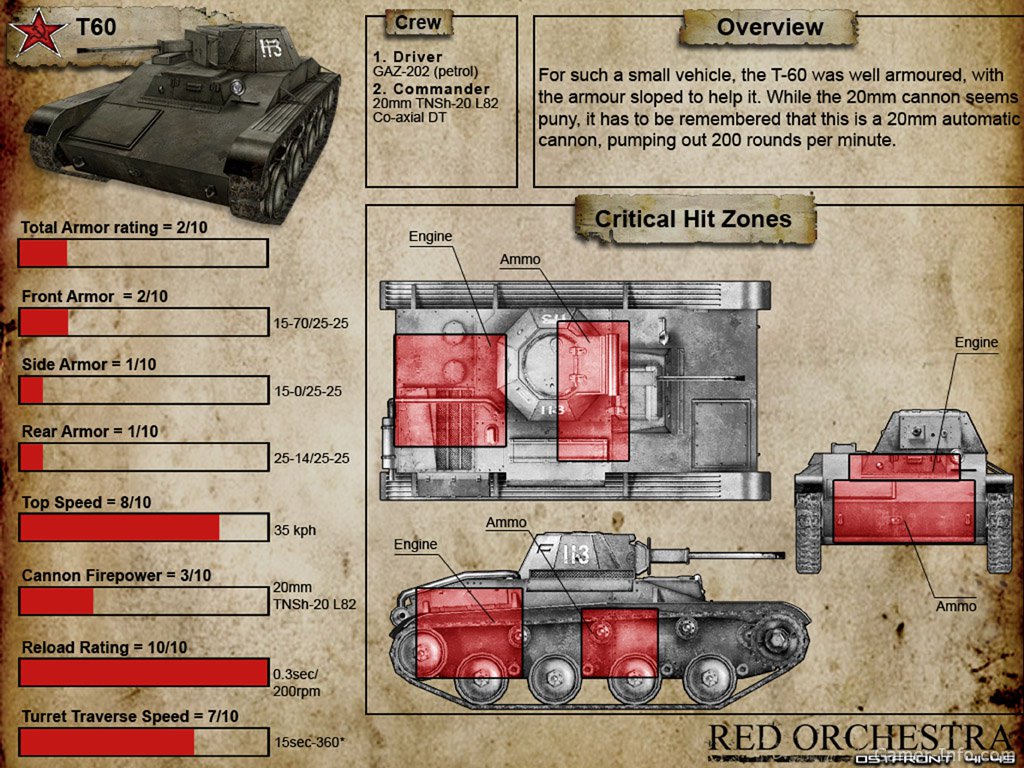

For instance, the Germans look for the "limit velocity" at which 3 out of 5 (or 5 out of 7, depending on caliber) rounds penetrate a test plate. People rush off and hunt down "penetration tables", but they need to go back to the actual data measurements to understand what is going on. Engine & transmission - rear engine, drive shaft down the center of the hull floor, with the transmission front and center, gearing front sidesĪ thing that most people don't realize about armor penetration is that it is all probabilistic at the core.Fuel - tank is in the hull floor gasoline.Ammo - MG ammo beside the hull gunner and in the hull behind the loader, main gun rounds stored in multiple bins around the hull, with the largest right behind the driver.Crew - Commander, Gunner, Loader, Driver, Hull gunner.
 Engine & transmission - the T-34 has the transmission/gearbox at the rear, as the drive sprocket is at the back of the tank. Fuel - tanks are in the hull sides diesel fuel, so less prone to fires. Ammo - MG ammo in the back of the turret and beside the hull gunner, while the main gun rounds are stored in the hull floor, with a small number of rounds in clamps on the hull side. Crew - Gunner/Commander, Loader, Driver, Hull gunner. Using the ballistics calcs, we can work out the actual velocity and angle the projectile hits the plate at. In game, each plate is modeled in its correct place and angle. Also modeled are areas like the vision slits, with the armored glass behind them. The intention with FHA was to provide a harder outer face, to defeat smaller projectiles, while the remainder of the plate provided more ductility to defeat larger rounds. The Germans used mostly RHA, with some of the key plates in the 30-50mm range being faced hardened (FHA) to a depth of about 5mm. Panzer IV is a more complex shape, totaling 45 plates. In addition, there are the turret vision slits as potential targets. The Soviets tended to use very high hardness steel, which is a good thing against lighter rounds, but lacks ductility and actually makes it more vulnerable against heavier rounds (such as the Panzer IV's 75mm). The mantlet and turret are cast steel, while the rest is RHA (rolled homogenous armor).
Engine & transmission - the T-34 has the transmission/gearbox at the rear, as the drive sprocket is at the back of the tank. Fuel - tanks are in the hull sides diesel fuel, so less prone to fires. Ammo - MG ammo in the back of the turret and beside the hull gunner, while the main gun rounds are stored in the hull floor, with a small number of rounds in clamps on the hull side. Crew - Gunner/Commander, Loader, Driver, Hull gunner. Using the ballistics calcs, we can work out the actual velocity and angle the projectile hits the plate at. In game, each plate is modeled in its correct place and angle. Also modeled are areas like the vision slits, with the armored glass behind them. The intention with FHA was to provide a harder outer face, to defeat smaller projectiles, while the remainder of the plate provided more ductility to defeat larger rounds. The Germans used mostly RHA, with some of the key plates in the 30-50mm range being faced hardened (FHA) to a depth of about 5mm. Panzer IV is a more complex shape, totaling 45 plates. In addition, there are the turret vision slits as potential targets. The Soviets tended to use very high hardness steel, which is a good thing against lighter rounds, but lacks ductility and actually makes it more vulnerable against heavier rounds (such as the Panzer IV's 75mm). The mantlet and turret are cast steel, while the rest is RHA (rolled homogenous armor). 
T-34 consists of 21 plates, plus the driver hatch and gun mantlet. This means the game is tracking the actual flight-path downrange. The game uses the same form of ballistics calculations for large projectiles as for small arms.







 0 kommentar(er)
0 kommentar(er)
